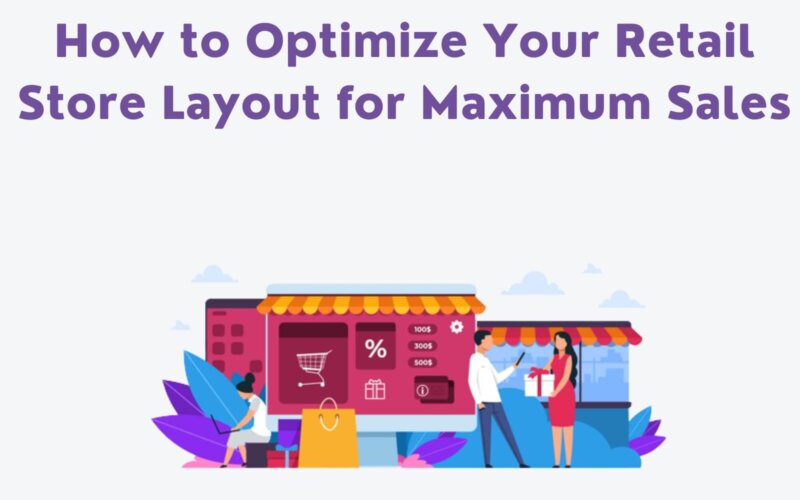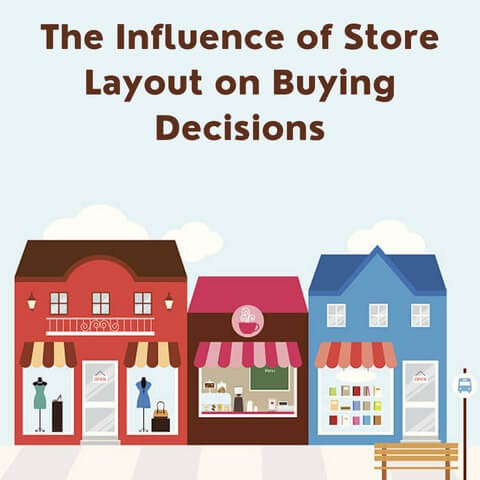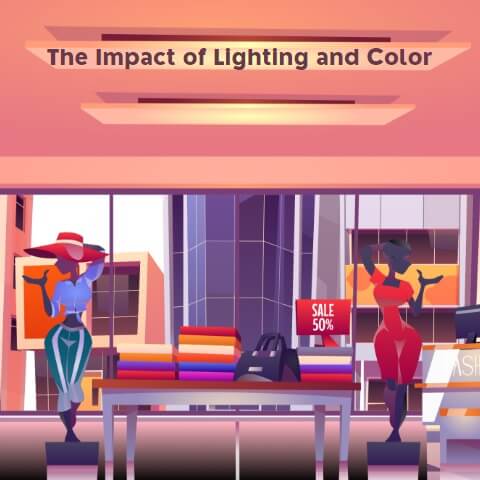How to Optimize Your Retail Store Layout for Maximum Sales

Retail store owners and managers are always looking for new ways to boost sales and revenue. Marketing and advertising are important for getting people into the store, but the optimizing retail store layout of the store is just as important for turning visitors into customers.
A well-designed store layout can make shopping more enjoyable, make customers feel more involved, and ultimately lead to more sales.
This article will look at the key factors that retailers should consider when designing and optimizing retail store layout for maximum sales.
We will show retailers how to set up their stores in a way that is effective and profitable, from where to put products to how to use signs and displays.
1. Understanding the Importance of Optimizing Retail Store Layout

The retail store layout is a critical component of a successful business strategy.
A well-designed store layout can increase customer satisfaction, sales, and brand loyalty.
The layout influences customer behaviour by creating a positive environment that encourages customers to browse and make purchases.
Therefore, retailers must understand the importance of optimizing retail store layout and prioritize creating a strategic layout plan that maximizes sales and customer satisfaction.
-
The Psychology of Consumer Behavior

The psychology of consumer behaviour plays a significant role in retail store layout design.
Retailers need to know how their customers’ feelings and thoughts affect their decisions about what to buy, what products they like, and how often they shop.
By creating a store layout that takes into account these psychological factors, retailers can increase the likelihood of customers making a purchase and improve their overall shopping experience.
-
The Importance of First Impressions

First impressions are crucial in retail store layout design.
A well-designed store entrance can give customers a good first impression and encourage them to go inside and look around.
An attractive and welcoming store entrance can also help set the tone for the shopping experience, making customers feel more relaxed and open to exploring the store further.
To make the shopping experience better for the customer as a whole, retailers should put a lot of effort into making the entrance look warm and inviting.
-
The Influence of Store Layout on Buying Decisions

The store layout can significantly influence buying decisions by making products more visible and accessible to customers.
By strategically placing products in the store, retailers can increase the likelihood of customers making a purchase.
For example, placing high-margin products at eye level or near the checkout counter can increase their visibility and sales.
The layout can also influence customer behaviour by encouraging browsing and discovery of new products, leading to increased sales and customer satisfaction.
-
The Significance of Store Layout on Brand Perception

The store layout can also influence the customer’s perception of the brand.
A well-designed and visually appealing store layout can give customers a good impression of the brand, which can make them more loyal to the brand and happier with it.
The layout should show who the brand is and what it stands for so that the brand’s image is consistent and cohesive throughout the store.
Retailers should make it a priority to set up their stores in a way that fits with their brand identity so that customers have a better impression of the brand.
2. Store Traffic Flow and Navigation

One of the key considerations for retail store layout is traffic flow and navigation.
A well-designed store layout should make it easy for customers to find their way around the store.
When setting up the store layout, retailers should think about the size of the store, the number of products, and the number of customers they expect.
Customers should be able to move through the store in a logical order that leads them to key products or interesting areas.
Retailers should also consider how to create a seamless shopping experience by avoiding bottlenecks or crowded areas that may cause frustration or deter customers from making purchases.
-
Merchandise Placement and Presentation

Merchandise placement and presentation are critical components of retail store layout.
The layout should highlight the most popular or high-margin products, making them easy to find and access.
Retailers should think about how to show off their products in a way that makes them look good and stands out from the rest.
The placement and presentation of products should also align with the customer’s needs and preferences, creating a personalized shopping experience that meets their expectations.
-
The Use of Signage and Displays

Signage and displays play a critical role in retail store layout.
They can help customers find their way around the store, draw attention to sales or promotions, and make shopping more visually appealing.
Retailers should think about where to put signs and displays and how to design them so that they fit with the store’s layout and brand image.
Also, the signs and displays should be easy to read and understand.
This will make shopping easy and encourage people to buy things.
-
The Impact of Lighting and Color

The way lighting and colour are used in a store has a big effect on how customers see the store and its products.
Retailers should consider how to use lighting and colour to create a welcoming and attractive store environment.
The lighting should be bright enough to show off the products and make the store feel warm and welcoming.
Colour should be used in a planned way to create a consistent brand image and draw attention to the most important products.
Retailers should also think about how lighting and colour can be used to create different moods or atmospheres in different parts of the store, giving customers a more personalized shopping experience that fits their needs and tastes.
3. Merchandise placement and presentation

Merchandise placement and presentation are critical components of retail store layout, as they play a significant role in attracting and engaging customers and ultimately driving sales.
Here are some elaborations for the subheadings under this section:
-
The Role of Product Placement on Sales

Product placement is how products are set up in a store, and it has a big effect on how well they sell.
Retailers should think about putting high-margin or popular items at eye level and in visible places to make them more visible and easy to find.
They should also think about how people move through the store and place products in a way that encourages browsing and spur-of-the-moment purchases.
-
The Benefits of Vertical and Horizontal Displays

Vertical and horizontal displays can be used to showcase products in different ways, each with its own benefits.
Vertical displays, like shelving units, let stores show off a lot of products while taking up little space on the floor.
Horizontal displays, like tables or racks, can be used to show off certain products or make displays with a certain theme.
When deciding between vertical and horizontal displays, stores should think about the products they sell and how the store is set up.
-
The Importance of Organizing Products by Price and Category

Organizing products by price and category makes it easier for customers to find what they are looking for and compare prices.
Retailers should consider how to create a logical and intuitive layout that guides customers through the store and helps them find the products they need.
This can be done with signs and displays, as well as by putting things in order by size, colour, or purpose.
-
The Impact of Product Availability and Inventory Management

Product availability and inventory management are critical factors in merchandise placement and presentation.
Retailers should always have plenty of popular items in stock and ready for customers to buy.
They should also consider how to manage inventory levels to avoid overstocking or stockouts, which can negatively impact sales.
-
The Benefits of Eye-catching Signage

Customers can be drawn to certain products or parts of the store with the help of signs that stand out.
Retailers should think about where and how to put signs and make sure they fit with the store’s layout and brand image.
They should also think about how to use colour, graphics, and fonts to make a sign that looks good and gets people’s attention.
-
The Role of Displays in Promoting Sales

Displays can be used to show off certain products or to give the store a theme.
Retailers should think about where and how to put displays and make sure they fit with the store’s layout and brand image as a whole.
They should also think about how to use lighting and colour to make a display that is appealing and makes people want to buy something.
-
The Significance of Seasonal and Thematic Displays

Seasonal and theme-based displays can be used to make the store feel exciting and urgent.
Retailers could use seasonal or holiday-themed displays to attract customers and get the word out about certain products.
They should also think about how to make a display that looks good and fits with the store’s layout and brand image.
-
The Use of Interactive Displays and Technologies

Interactive displays and technologies can be used to create a personalized shopping experience that meets the needs and preferences of the customer.
Retailers should think about using digital displays, touchscreens, or augmented reality to show off products and give customers more information or ways to customize them.
Trusted by 500+ Clients
Get in Touch
We are here for you, and we are wearing our thinking caps


























